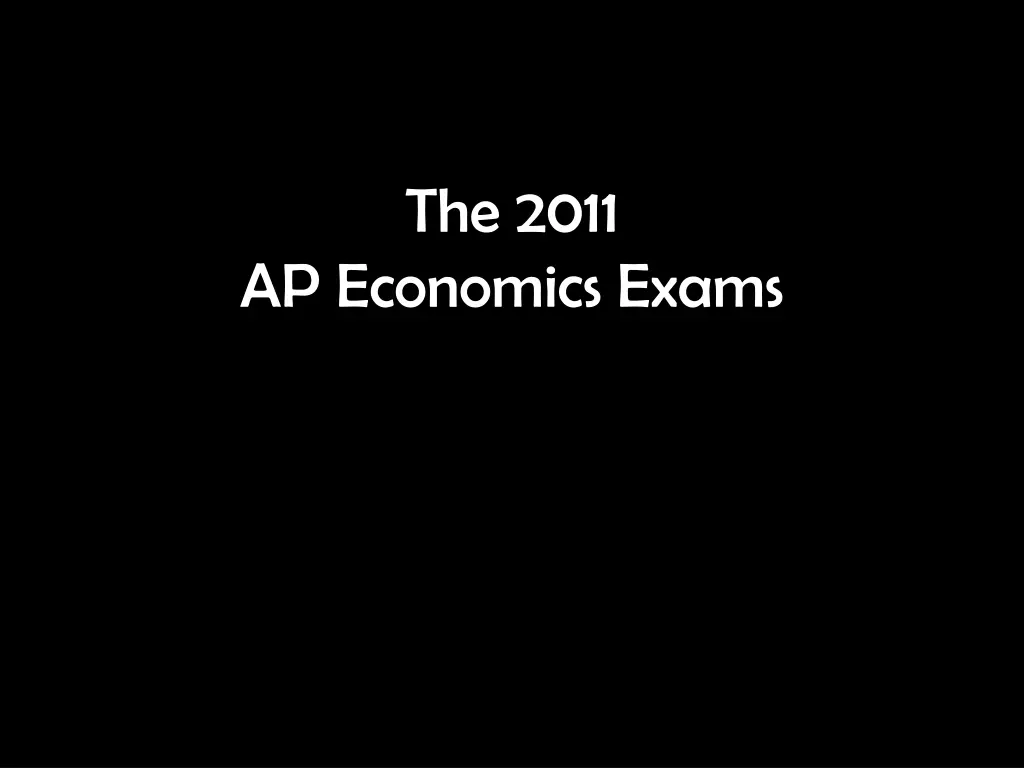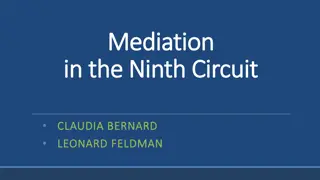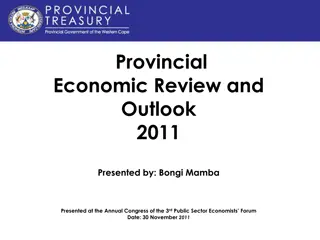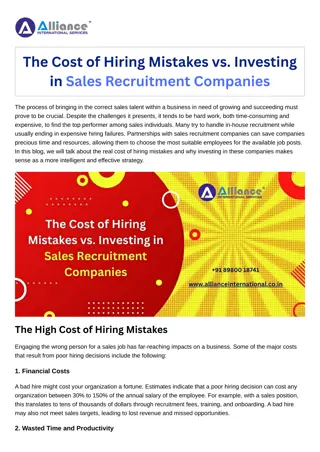
Key Concepts in AP Economics Exams 2011
Explore the top 10 common errors in AP Economics Micro, overview of trouble spots, and detailed questions on market equilibrium, deadweight loss, and monopolistic practices with graphical representations and explanations.
Download Presentation

Please find below an Image/Link to download the presentation.
The content on the website is provided AS IS for your information and personal use only. It may not be sold, licensed, or shared on other websites without obtaining consent from the author. If you encounter any issues during the download, it is possible that the publisher has removed the file from their server.
You are allowed to download the files provided on this website for personal or commercial use, subject to the condition that they are used lawfully. All files are the property of their respective owners.
The content on the website is provided AS IS for your information and personal use only. It may not be sold, licensed, or shared on other websites without obtaining consent from the author.
E N D
Presentation Transcript
The 2011 AP Economics Exams
Top 10 Most Common Errors AP Economics Micro Only 2011
Overview of Trouble Spots 11. Finding the Socially Optimal Quantity 5. Effect of Price Ceiling on DWL 4. MR with a Price Ceiling 3. MFC with a Minimum Wage 2. Effect of Lump Sum Tax on DWL 1. Deadweight Loss from a Negative Externality Special Mention: Axis Labels! 10. Deadweight Loss from a Positive Externality 9. Allocative Efficiency 7. Price Elasticity of Demand 6. MFC and MRP in a Perfectly Competitive Labor Market
11. Overseas Micro 2 (a)(ii) Question: Suppose research shows that the more college education individuals receive, the more responsible citizens they become and the less likely they are to commit crimes. (a)Draw a correctly labeled graph for the education market and show (ii) The socially optimal quantity of education, labeled QS.
PRICE Supply = Marginal Social Cost PM Marginal Social Benefit Demand = Marg. Private Ben. 0 QM QS Quantity of Educations 36% answered correctly Socially Optimal Quantity
10. Overseas Micro 2 (a)(iii) Question: Suppose research shows that the more college education individuals receive, the more responsible citizens they become and the less likely they are to commit crimes. (a)Draw a correctly labeled graph for the education market and show (iii) Deadweight loss at the market equilibrium, completely shaded.
PRICE Deadweight loss from underproduction Supply = Marginal Social Cost PM Marginal Social Benefit Demand = Marg. Private Ben. 0 QM QS Quantity of Educations 33% answered correctly
9. Micro 1 (c) Question: Assume that the monopolist is maximizing profit. Is allocative efficiency achieved? Explain.
Micro 1 (c) Price Marginal Cost PM PS Demand 0 QM QS Quantity Marginal Revenue
9. Micro 1 (c) Answer: No, because P MC/ D MC / MSB MSC. (33% answered correctly)
8. Micro 1 (g) Question: Assume instead that the monopolist practices perfect price discrimination (also called first-degree price discrimination). (ii) What will be the value of the consumer surplus?
Micro 1 (c) Price Marginal Cost PS Demand 0 QS Quantity
8. Micro 1 (g) Answer: Zero (because each customer is charged the most he or she is willing to pay, thus eliminating any consumer surplus). (28% answered correctly)
7. Micro 1 (d) Question: Between the prices of $16 and $18, is the monopolist in the elastic, inelastic, or unit elastic portion of its demand curve. Explain.
Micro 1 (d) Answer Price Inelastic range $18 $16 Demand 0 11 12 Quantity Marginal Revenue
7. Micro 1 (d) Answer: Demand is inelastic because TR increases as price increases / MR is negative / the price elasticity is .74 < 1. 27% answered correctly
6. Micro 2 part (c) Question: Assume that avocado producers hire workers from a perfectly competitive labor market. Draw a graph of labor supply and demand for the typical firm and label the supply curve MFC and the demand curve MRP.
Micro 2 (c) Answer Wage MFC W MRP 0 QL Quantity of Labor 25.3% answered correctly
5. Overseas Micro 2 part (b) Question: Assume that the government imposes an effective (binding) price ceiling on the price of college education. (ii) Does this price ceiling increase, decrease, or have no impact on the deadweight loss in this industry? Explain.
PRICE Deadweight loss from underproduction Supply = Marginal Social Cost PM Marginal Social Benefit Demand = Marg. Private Ben. 0 QM QS Quantity of Educations
PRICE Supply = Marginal Social Cost P1 PM PCeiling Marginal Social Benefit Demand = Marg. Private Ben. 0 QC QM QS Quantity of Educations
5. Overseas Micro 2 part (b) Answer: Deadweight loss will increase because the quantity supplied will decrease. (13 percent answered correctly)
4. Micro 1 (f) Question: Assume that regulators impose a price ceiling of $22. What is the marginal revenue of the eighth unit?
Micro 1 (f) Price $24 Price ceiling $22 Demand 0 Quantity 8 9 Marginal Revenue
Micro 1 (f) Price Price ceiling $22 Demand 0 Quantity 9 Marginal Revenue
4. Micro 4 (f) Answer: $22. (12% answered correctly)
3. Overseas Micro 3 (c)(ii) Question: Identify the quantity of labor hired [by a monopsony when] the government imposes a minimum wage of $12.5. Explain.
Wage Marginal Factor Cost Supply of Labor 12.5 10 Marginal Revenue Product 100 150 Quantity of Labor
Wage Marginal Factor Cost Supply of Labor 12.5 10 Marginal Revenue Product 100 150 Quantity of Labor
3. Overseas Micro 3 (c)(ii) Answer: 150 units. (37% answered correctly) Explanation: Because the marginal factor cost curve becomes horizontal at the minimum wage up to a quantity of 150. (8% answered correctly)
2. Micro 3 (b) Question: Assume a lump-sum tax is imposed on the [perfectly competitive] producers of good X [known to create a negative externality]. What happens to the deadweight loss? Explain.
2. Micro 3 (b) Answer: There is no change because a lump sum tax does not affect marginal cost, so the quantity supplied remains the same. A discussion of firms exiting due to the lump sum tax and the resulting change in DWL is also acceptable. (6% answered correctly)
1. Micro 3 (a) Question: Draw a correctly labeled graph of the market for good X [known to create a negative externality] and show (iv) The area of deadweight loss, shaded completely
Answer: PRICE Marginal Social Cost Deadweight loss from over production Marginal Private Cost Demand = MSB QS QM QUANTITY Market Quantity 4.1% answered correctly
Deadweight Loss with Negative Externalities Quantity levels less than or greater than the efficient quantity create efficiency losses (or deadweight losses). --McConnell, Brue, Flynn, 18e, p. 129 Diagrams similar to the previous slide: McConnell, Brue, Flynn, 19e, pp. 99 and 105 Parkin 5e, p. 117 This issue is discussed further in the Deadweight Loss Presentation.
Labels (many of which are wrong)use whats in the text Price in pesos Q pesos $/Peso PL FX/$ Value of Peso E.V. of Peso Peso in dollars $ vs. Pesos Price of $ / Peso Peso in relation to $ E Pesos per Dollar Peso P P$ Price of $ V$ Value of $ Peso Peso per $ P = Peso $ in terms of peso Peso value of $ Peso price for $ Exchange rate





















